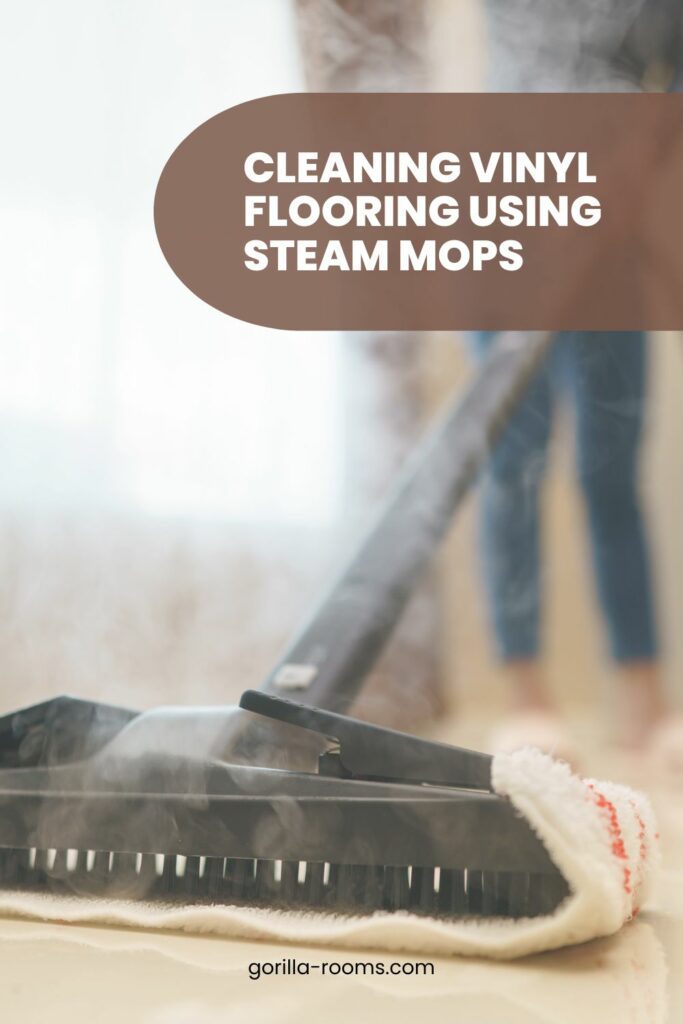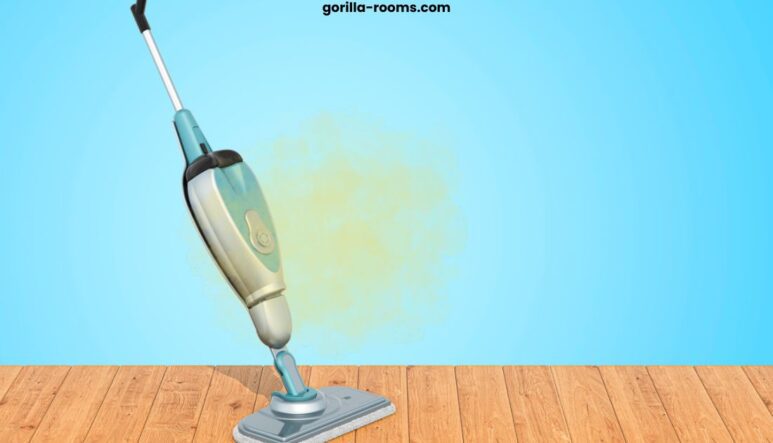A steam mop is perfect for tackling challenging messes on different floorings when maintaining a clean home. Most people wonder whether they can use steam mop on vinyl flooring or not?
You can use the steam mop on the vinyl floor with low-temperature settings. It will remove harsh stains within seconds. But constant steam mop use is not recommended, as it will make the vinyl floor less shiny.
In this article, I’ll cover the cleaning process using a steam mop on vinyl floors and some additional cleaning tips for vinyl floors.
Can you Use Steam Mop on Vinyl Flooring?

A steam mop with a low steam setting can clean some kinds of vinyl surfaces. I suggest you conduct a short test to determine whether or not a steam mop can effectively clean your floor.
First, choose a room with vinyl flooring that is out of the way in the home. This area needs to be well-guarded and concealed from the view of visitors. For instance, you could move the couch to the side and use the ground immediately beneath or behind it.
After that, use your new steam cleaner on this floor section. Check to see if the mop leaves any traces on the flooring (appearance of scratches, scuff marks, or stains). If it does, halt and think about returning the item. Your floor is compatible with your steam mop if nothing occurs!
One of the most crucial things to remember when learning to clean vinyl floors is to keep the heat low and the floor fresh to be safe.
To clean, always use the lowest steam setting that is accessible. After steam mopping the surface, use a dry mop to remove any remaining moisture. For the carpeting, moisture is not good.
Related Post: Best Cleaning Machines For Vinyl Floor
Best Way of Cleaning Vinyl Flooring using Steam Mops?

The steam mop and your vinyl surface can both be harmed by improper steam mop use. I recommend taking the following actions to prevent this:
1- Proceed With Caution
The region you want to clean must be completely sealed; otherwise, the hot steam from the cleaner could harm your delicate vinyl floor.
2- Check the Temperature
The temperatures for low, medium and high steam settings vary among steam mops.
The ideal temperature for vinyl flooring is 250°F, but it may be higher or lower based on the surface’s dirt.
Make sure to adjust the temperature based on your needs starting from the lowest temperature.
3- Collect the Debris
Use a vacuum machine to remove the dust before steaming the floor if you’re not using a steam mop with both vacuuming and steaming capabilities.
Your cleansing process will become easier to control and quicker using this method. Use a broom to sweep the dust in one area and gather it with a dustpan if you don’t have access to a 2-in-1 steam mop or vacuum cleaner.
Cleaning under furnishings and other concealed areas of the home is best done using this technique.
4- Apply a Cleaning Agent
Turn on your steam mop after adding the appropriate amount of the cleaning solution you plan to use to the cleaning water.
Some steam mops don’t require you to use any cleaning solutions; simply using clean water will do the trick. Adding a cleaning agent could harm your steam mop if it doesn’t have that function.
Check if your steam cleaner has a sprayer to see if it can be used with cleaning solutions. You can use your desired cleaning product if it has one.
Related Post: Can You Put Vinegar in Steam Mop
What is The Risk of Using a Steam Mop On a Vinyl Floor?
Even though steam mops are effective cleaning tools, some flooring can be harmed by their heat and pressure.
When exposed to extreme heat and moisture, vinyl floors are especially prone to melting or discoloration.
Furthermore, if vinyl surfaces are not properly cleaned after using a steam mop, they may become sticky.
Use vinyl-friendly cleaner and take additional precautions if you have vinyl floors and want to use a steam mop.
Cleaning Tips for Vinyl Flooring
Here, I’ll share some additional suggestions for maintaining vinyl surfaces. They’ll be just as spotless as if you had steam-mopped vinyl surfaces.
1- Wipe Up Anything You’ve Spilled Right Away
Vinyl carpeting has a long lifespan. On the other hand, keep liquids and precipitation from collecting on your vinyl plank flooring. The liquid may seep between the floors, causing the boards to swell and lift.
Additionally, there’s a chance that the liquid will seep under the boards and develop mold and mildew. These fungi are pathogenic threats. They expel spores that lead to respiratory problems, asthma attacks, and allergic responses.
2- Utilize a Soft, Moist Cloth
Although vinyl flooring is resilient, it is not unbreakable. If you’re using cleaning tools with pointed edges, you risk scratching them.
To remove stubborn spots from the floor, avoid using scouring pads or steel wool. Give the troublesome region a squirt of concentrated floor cleaner. Wash it away with a microfiber towel and some effort.
3- Sweep Scuffs Out
If you notice scratches on your new vinyl floor, don’t worry. I have some techniques to help you get rid of them.
A pink pencil eraser works wonders for getting rid of tough floor marks. The scuff immediately rubs off if you gently rub the affected area.
A tennis ball works wonders to remove stubborn marks on vinyl flooring. Rub the scuff in a circular manner, and it will lift. When the first two remedies fail, quickly mist the discoloration with WD-40 lubricating oil. The discoloration is penetrated by the oil, which makes removal simple.
Alternatives to Steam Mop
There are several alternatives to steam mops for cleaning vinyl surfaces. I have listed some of them:
1- Mopping
You can also clean your vinyl floor with a standard mop and bucket. However, unlike steam mopping, this technique does not disinfect the area as thoroughly.
2- Vacuum Cleaners
Keeping your vinyl floor spotless and shiny can be achieved by routinely vacuuming it.
3- Swiffer Sweeper
This product works well for swiftly and easily picking up dust, dirt, and pet hair.
4- Microfiber Cloths
Use microfiber cloths, water, or a suitable cleaner to remove dirt without harming your surfaces.
5- Wood Floor Cleanser
You might consider using wood floor cleaner as an alternative to steam mops for tough stains.
Conclusion
Summing up, if you take the time to read and adhere to my suggested directions, you can use steam mops safely on vinyl floors. Choosing a steam mop and cleaning solution carefully is essential for maintaining the best possible appearance for your surfaces.
Additionally, frequent purchases of a secure cleaner or sealer guarantee that your floor will remain in excellent condition. When uncertain, it’s always best to contact a team of specialized cleaners with the skills and training needed to keep your vinyl floors safe.

